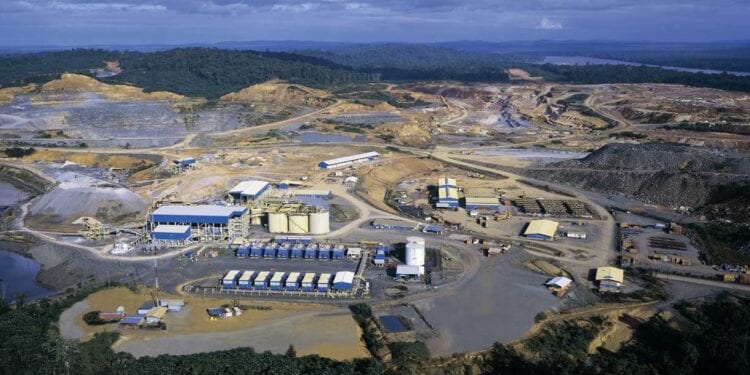Broad Zones Include 16m of 9.0 g/t And 32.1m Of 3.6 g/t Gold
Results from Omai Gold Mines Corp.’s (TSXV:OMG) first two holes of diamond core drilling at the Omai Project in Guyana has confirmed that high-grade mineralisation continues below the historically-producing Wenot Pit.
The 5,000m drill programme is focused on expanding the open-pit potential of the Wenot Pit that produced 1.8 million ounces of gold at 1.6 grams per tonne to a depth of 190m.
Highlights of the drill programme:
- Holes 21ODD-001 and 21ODD-002 were drilled from the north side of the pit to test multiple mineralised structures below the Wenot Pit, on section lines approximately 350m apart.
- 21ODD-001 intersected multiple high-grade and thick intervals including 19.5m of 2.2 g/t Au, 13.5 m of 3.6 g/t Au, and 16 m of 9 g/t Au including 1 m of 127.7 g/t Au.
- 21ODD-002 intersected 32.1 m of 3.6 g/t Au including 26.7 g/t (0.4 m) and 25.7g/t (1 m) and an additional intersection further downhole of 18.4 m of 2.2 g/t Au.
CEO, Mario Stifano, said drilling has confirmed the high-grade mineralisation extends at least 100m below the historical pit with indications it remains open at depth.
“We are pleased with our assay results from the first two holes we drilled at Omai, that complement the assay results we announced in February,” Mr Stifano said.
“These results demonstrate that the grades and thicknesses of gold mineralization continue at least 100 to 150m below the historically-producing Wenot Pit, and remain open to depth and on strike.
“We look forward to updating our stakeholders with further results from our 5,000-meter drill programme in the coming months.”
Holes 21ODD-001 and 21ODD-002 were drilled to confirm that gold mineralisation continues at depth under the Wenot Pit. The higher-grade zones are drilled on sections separated by 350 m, and are associated with sheared structures that host extensional veins. Gold, quartz-carbonate-sericite alteration and pyrite are associated with hornblende diorite intrusions within the basalt units under the pit. A second target type is the contact between the rhyolite dikes and basalts, which host highly sheared zones with strong iron and magnesium carbonate-sericite alteration and sulphides.
Mr Stifano said gold grades are significant in both holes. The mineralisation proximal to the Wenot Shear has also been confirmed by these holes with 21ODD-002 intersecting 18.4 m @ 2.2 g/t Au within the Lithic wacke close to the highly sheared and altered contact of the Wenot Shear.
Drilling is currently on the south side of the pit and drilling back to the north side. Songela, a well-established Guyanese company, is the drilling contractor. A single rig with two shifts is being used.












